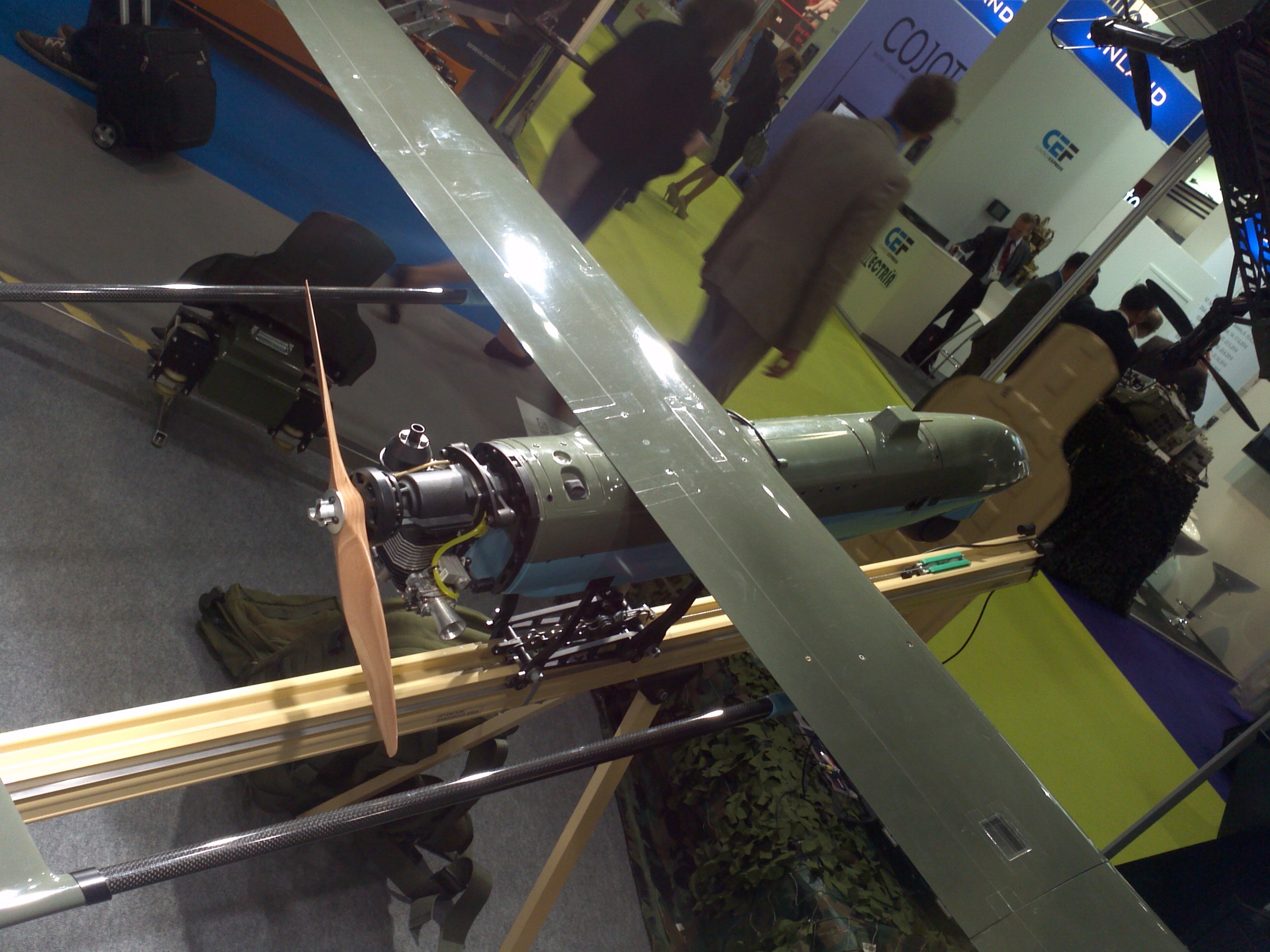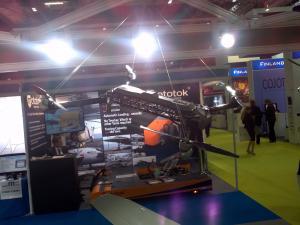DSEI (Defence Systems and Equipment International) bills itself as the “world’s leading defence and security event”. Over 1,500 companies from 50 countries showcase their wares to an estimated 30,000 people over a four-day period at London’s ExCel Centre. During day one, I caught up with Estonian Eli Airborne Solutions and took a closer look at their UAVs.

Since their formation in 2003, Eli Airborne Solutions has been at the forefront of UAV design. Their flagship UAV (unmanned aerial vehicle, colloquially known as a drone) is the UAS Swan III (pictured), a third generation remote control air vehicle with a range of up to 150 km (payload dependant) with a maximum altitude of 2500 m and a top speed of some 130 km/h. Launched by catapult and powered by a Honda GX35 combustion engine, the system is designed to capture high quality images and video from stabilised cameras. Despite being operated via a highly sophisticated computer system, the Swan III handles much of the flight work itself, with fully automated take-off and landing procedures (parachute aided) and pre-programmable flight patterns, adjustable mid-mission. Additionally, it is possible to define actions to be completed should a malfunction occur, such as return to base, continue with the mission or perform an emergency landing if the issue is unrecoverable.
As well as entering service with the Estonian Defence Forces, the Swan III has seen service in Georgia, which manufactures its own models under license agreement from Eli. Georgia originally purchased UAVs from Israel, but ceased using them after fears they were compromised after a suspicious number were downed. The licence agreement with Eli was the largest Georgia has ever made and required Estonia to gain permission from its NATO partners before proceeding.

Standing alongside the Swan III is its smaller brother, the Multirotor ELIX-4XL, a small and man-portable UAV, which also transmits high quality imagery in real time. But whereas the Swan III is ideal for a pre-defined reconnaissance flight over enemy territory, the ELIX-4XL is for use in situations where, for instance, a small unit of troops might be pinned down by enemy fire and need to rapidly asses the situation from the air. The ELIX-4XL is carried in a bespoke rucksack and has a snap-together, tool-less assembly structure, meaning it can be airborne in only a few minutes. Despite its lightweight construction – it weighs in at just over four kilos – it is extraordinarily robust. Like its larger brother, it can also operate autonomously, but its simple navigational controls mean it can be operated by non-specialised personnel after only a few hours of training.
“It is a brilliant idea to make it foldable,” a senior (and unnamed, at his request) NATO member officer remarked. “There are other small UAVs on the market, but none which can be carried quite so neatly as this.” He certainly has a point – it is 540 mm x 250 mm folded and you can’t get much smaller than that.

